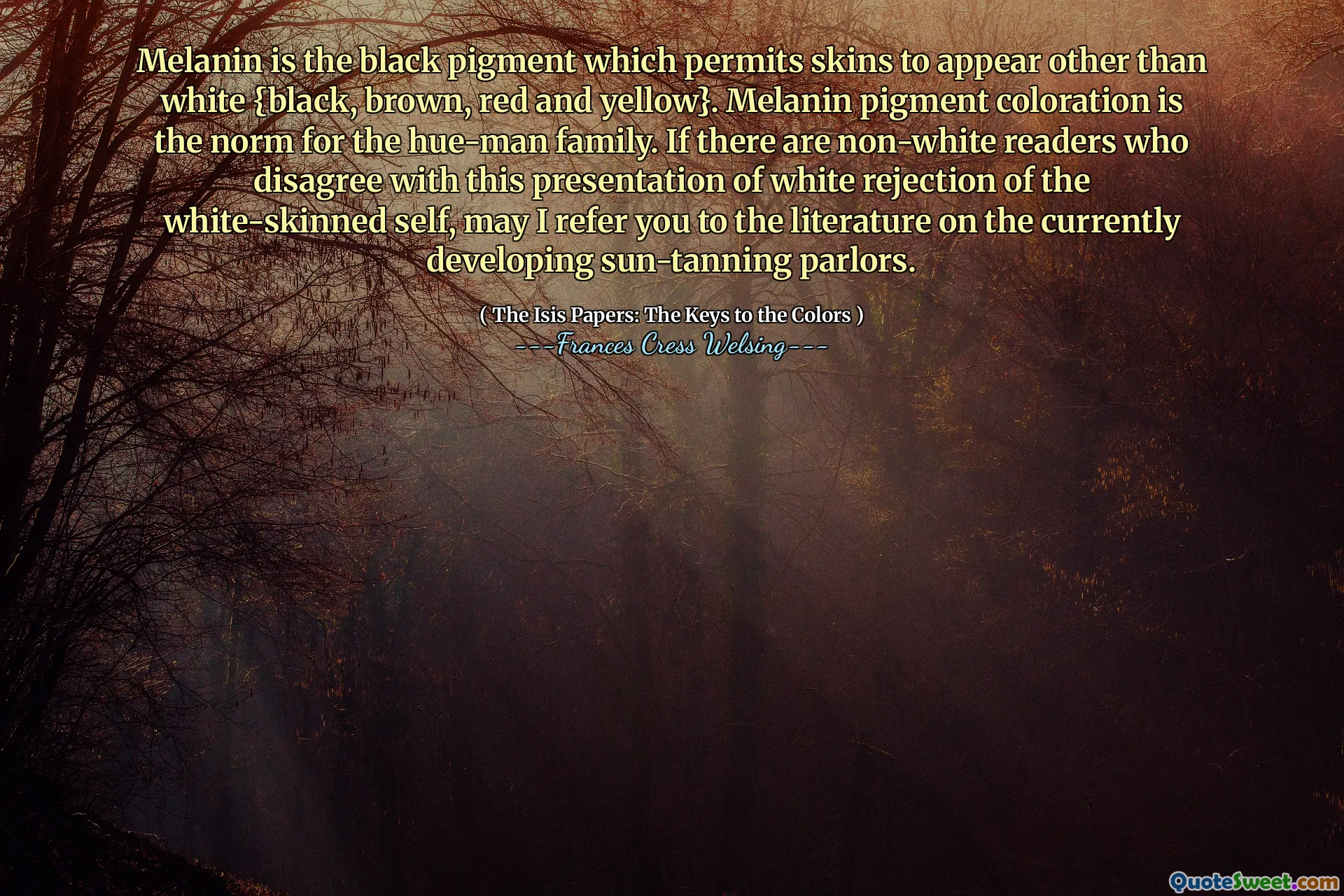
Melanin is the black pigment which permits skins to appear other than white {black, brown, red and yellow}. Melanin pigment coloration is the norm for the hue-man family. If there are non-white readers who disagree with this presentation of white rejection of the white-skinned self, may I refer you to the literature on the currently developing sun-tanning parlors.
Melanin is the pigment responsible for the various colors of human skin, which can range from black, brown, red, to yellow, contrasting with the notion of white skin as the standard. In essence, people of color represent the natural spectrum of human pigmentation. The author emphasizes that melanin is central to understanding identity and racial dynamics within the human family.
Welsing challenges the perception of whiteness and suggests that those who identify as non-white might not agree with her views on the rejection of their own skin color. She cites the growing popularity of tanning salons as evidence that many desire darker skin tones, which indicates an underlying commentary on beauty standards and self-acceptance. The discussion encourages readers to reflect on the social implications of melanin and skin color.
